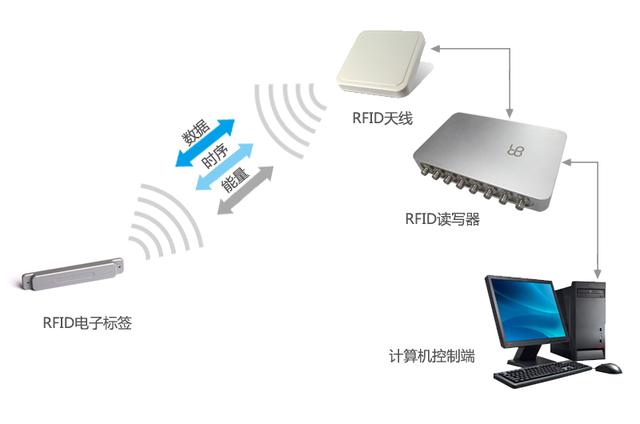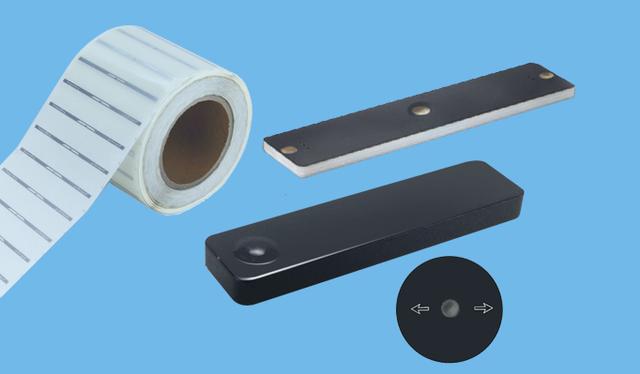|
The OP
Published on 2020-1-13 20:37
Only look at the author
This post is from RF/Wirelessly
| ||
|
|
||
Visited sections |
- 【Posts】What is RFID technology?
- 【Posts】Wireless Radio Frequency Identification Technology-RFID Theory and Application
- 【Posts】RFID (Radio Frequency Identification) Application Architecture Planning Guide
- 【Posts】Radio Frequency Identification Technology and Its Application Development Trend
- 【Posts】I want to know about wireless receiving groups and channels, about 433
- 【Posts】MicroPython Hands-on (22) - Wireless Broadcasting of Control Board
- 【Posts】A brief discussion on the wireless charging scheme and circuit principle of the vehicle bracket
- 【Posts】I would like to ask you, what are the conditions for radio waves to be generated and emitted from the antenna?
- 【Download】Radio Frequency Identification (RFID)
- 【Download】Radio Frequency Identification (RFID) Theory and Application
- 【Download】Very good wireless radio frequency identification technology RFID theory and application (forwarded to friends who have no money
- 【Download】Very good wireless radio frequency identification technology RFID theory and application
- 【Download】Wireless Communication Principles and Applications (Second Edition, Chinese Edition) + Complete! .pdf
- 【Download】nRF24L01 module circuit diagram and PCB diagram (2.4G wireless transmission)
- 【Download】Wireless transmission-RF schematic.pdf
- 【Download】NRF24L01 wireless module (program + schematic + chip information).rar
- 【Design】RFID four-in-one meal card with password meal card/bus card/access card modification
- 【Design】IC RFID card built-in 0805LED
- 【Design】Black Rock Shooter Luminous RFID NFC Bus Card and Meal Card
- 【Design】RFID switch 2
- 【Design】PN532 card reader (supports NFC, RFID)
- 【Design】Based on ST ST25RU3993 unmanned convenience store ultra-high frequency UHF RFID reader solution
- 【Circuits】How to use MFRC522 to create an RFID card reader security system
- 【Circuits】How to use RFID to create an automatic roll call attendance system
- 【Circuits】Design of blockchain RFID scanner based on MFRC522
- 【Circuits】Wireless alarm circuit with multiple detection heads
- 【Circuits】Design and principle analysis of infrared monitoring wireless alarm (CD4013, μPC1373, 555)
- 【Circuits】Frequency modulation circuit for crystal oscillator stabilization in radio transmitter alarm
- 【Articles】Functional design of RFID-based wireless nursing information system and its hardware system implementation
- 【Articles】Design of RFID reader based on software radio
- 【Articles】RFID wireless light picking system
- 【Articles】Design of online access control system based on radio frequency identification technology
- 【Articles】Application Cases | Classic Applications of RFID Reader-Writer Devices in Smart Factories
- 【Articles】What are RFID tags? What does a simplified RFID system look like?
-
Wireless Radio Frequency Identification Technology-RFID Theory and Application
WirelessRadioFrequencyIdentificationTechnology-RFIDTheoryandApplication
-
RFID (Radio Frequency Identification) Application Architecture Planning Guide
StartingfromthegrandundertakingoftheInternetofThingsadvocatedbyEPCGlobal,combinedwiththeauthor'spersonalexperienceinparticipatinginsomeRFIDpilotprojects,thispaperfocusesonthevarioussystemqualitiesthatatypicalRFIDapplicationsystemshouldhave, ...
-
OPEN SCOFIELD WINTER WARDROBE
[img]https://wwwnet/images/2024/11/14/1f9dff95d3bc981f8img][img]https://wwwnet/images/2024/11/14/2a81ca07f0c52991bimg]
- Newbie Report Newbie Report
- How to use CAN communication to control the inverter?
- Example of distributed multi-axis servo drive using C2000 real-time controller
- EE's RF related posts sorted out
- STM32 interrupt priority explanation
- Explaining Infineon's largest acquisition in history: the $10 billion cash acquisition of Cypress
- I found a very good 51 single-chip microcomputer introductory tutorial book and recommend it to beginners. It is suitable for beginners to learn programming by themselves.
EEWorld Datasheet Technical Support
-
Qualcomm launches its first RISC-V architecture programmable connectivity module QCC74xM, supporting Wi-Fi 6 and other protocols
On November 14, Qualcomm announced the launch of two connectivity modules, QCC74xM and QCC730M, f
-
It is reported that memory manufacturers are considering using flux-free bonding for HBM4 to further reduce the gap between layers
On November 14, according to Korean media ETNews, Samsung Electronics, SK Hynix, and Micron are a
-
ON Semiconductor CEO Appears at Munich Electronica Show and Launches Treo Platform
During Electronica, ON Semiconductor CEO Hassane El-Khoury was interviewed by Power Electronics N
- AMD launches second-generation Versal Premium series: FPGA industry's first to support CXL 3.1 and PCIe Gen 6
- SEMI: Global silicon wafer shipment area increased by 6.8% year-on-year and 5.9% month-on-month in 2024Q3
- TSMC's 5nm and 3nm supply reaches "100% utilization" showing its dominance in the market
- LG Display successfully develops world's first stretchable display that can be expanded by 50%
- Seizing the Opportunities in the Chinese Application Market: NI's Challenges and Answers
- New diaphragm-free solid-state lithium battery technology is launched: the distance between the positive and negative electrodes is less than 0.000001 meters
- Photoresist giant JSR Korea EUV MOR photoresist production base started construction, expected to be put into production in 2026
- Problems with STM32 and passive buzzer playing sound
- Embedded Tutorial_DSP Technology_DSP Experiment Box Operation Tutorial: 2-28 Building a Lightweight WEB Server Experiment
- OPA847IDBVR op amp domestic replacement
- AG32VF407 Test UART
- [Digi-Key Follow Me Issue 2] Chapter 1: Sharing on receiving the goods
- What model is this infrared receiver? Which model can be used instead? Thank you
- Selling brand new unopened ZYNQ 7Z020 FPGA core board
- The LORA module used in the lithium battery-powered water meter setting can save energy when 100 water meters are installed in one corridor.
- I would like to ask, when a port is set to RX0, is it necessary to set the input and output direction of this port?
- Why is this year so difficult? It’s even more difficult than during the pandemic. I’m 30 and facing unemployment. I’m so confused.
- Ask about the voltage regulator test question
- [Xiaohua HC32F448 Review] About Xiaohua Semiconductor's UART interrupt sending and PRINTF construction and redirection
- 【BIGTREETECH PI development board】 HDMI output test
- 【BIGTREETECH PI development board】+08. Audio test (zmj)
- [Xiaohua HC32F448 Review] +RTC electronic clock
- # STM32H7S78-DK Development Kit Three-week Review: Implementation and Analysis of Simple Sound Collection and Storage Using SD Card Reading and Writing
- [STM32H7R/S] Review⑧ nano edge ai studio training a model--Part 1
- [2024 DigiKey Creative Competition] A "fortune-telling" artifact based on Raspberry Pi
- New energy vehicle on-board AC slow charging and maintenance
- Embedded Engineer AI Challenge Camp (Advanced): Deploy InsightFace algorithm on RV1106 for real-time face recognition of multiple people
- I want to make a self-driving car. I saw one on Bilibili that costs 300 yuan. I am hesitant.
- [K230 Embedded AI Development Board Review] + License Plate Recognition and Billing Management
- How to deploy LVGL free graphics library on low-cost ARM platform, based on Allwinner T113-i
- Please help me analyze the reasons why EMI fails.
- ChatTTS is really awesome!




 提升卡
提升卡 变色卡
变色卡 千斤顶
千斤顶